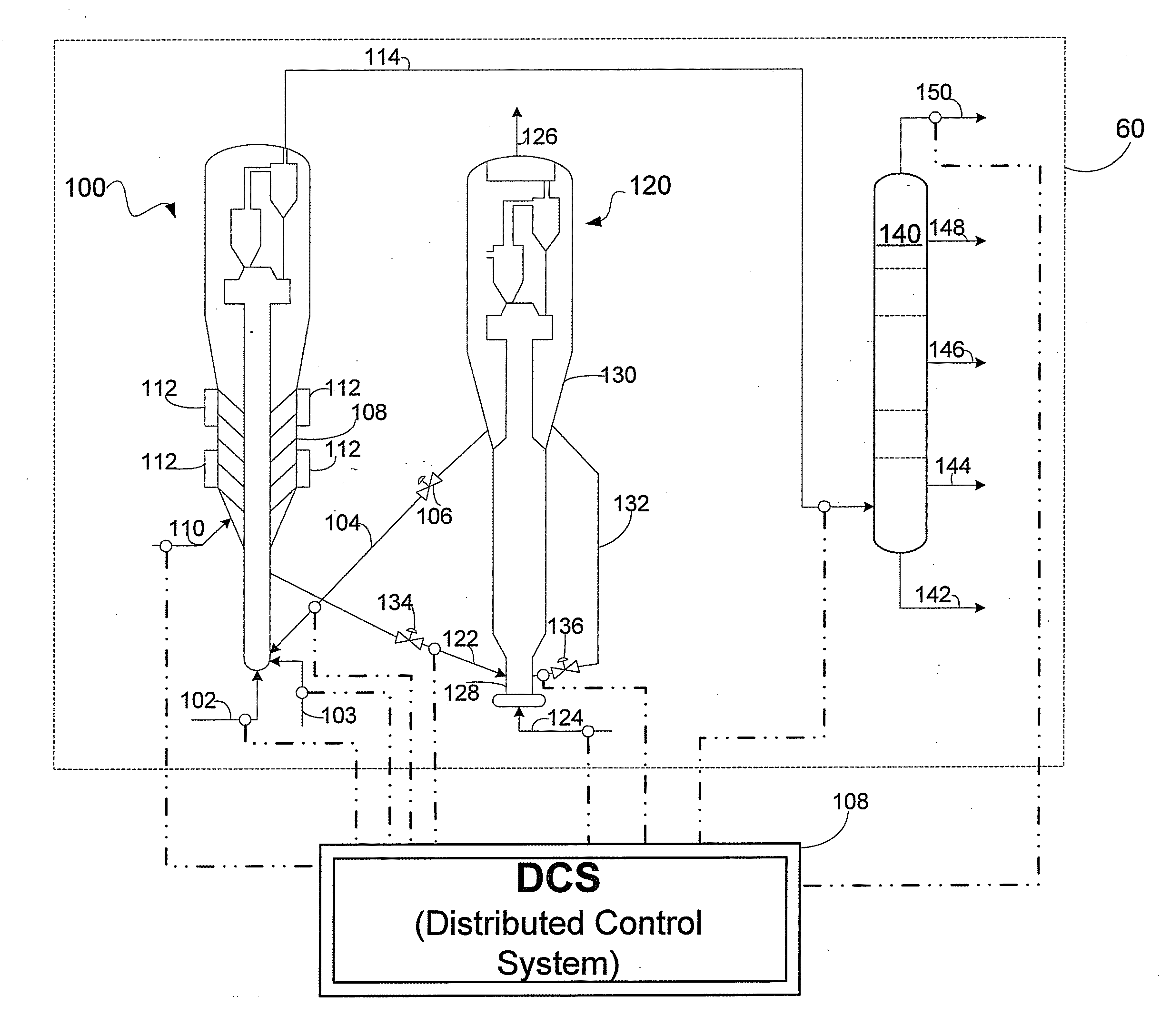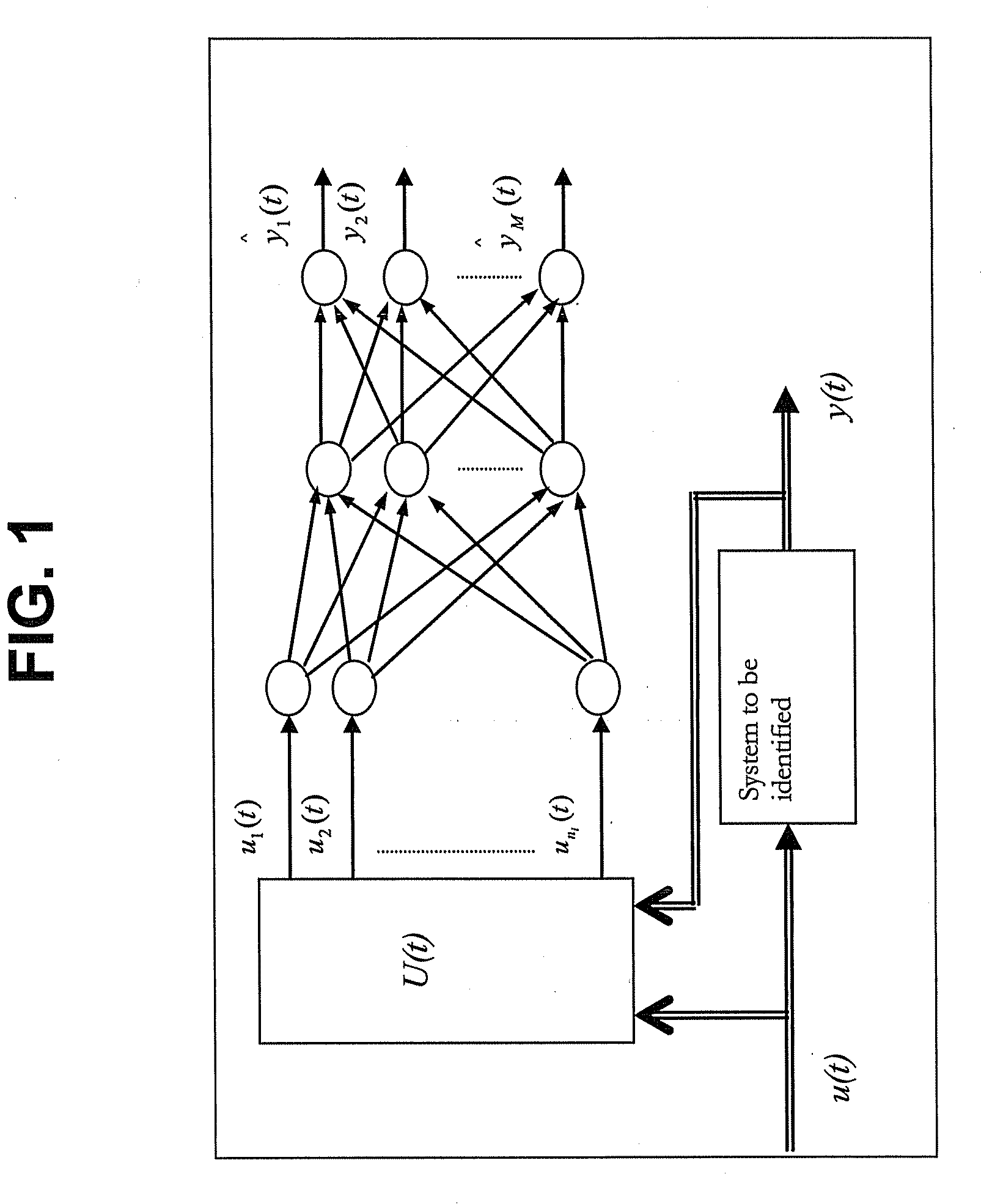Automation and Control of Energy Efficient Fluid Catalytic Cracking Processes for Maximizing Value Added Products
- Summary
- Abstract
- Description
- Claims
- Application Information
AI Technical Summary
Benefits of technology
Problems solved by technology
Method used
Image
Examples
Embodiment Construction
[0019]The invention will be described below in more detail.
Neural Networks Modeling
[0020]Without loss of generality, a nonlinear system can be defined as
y(t)=f[Y(t−1),Y(t−2), . . . , Y(t−ny),
U(t−1),U(t−2), . . . U(t−nu)]+e(t) (1)
[0021]where ny and nu are the maximum lags in the output vector and the input vector e(t) is the noise. The MLP network for constructing the system mapping f(.) is shown in FIG. 1.
[0022]FIG. 1 shows three layers, but more layers are a direct generalization. The input layer has ni=nyM+nuN neurons, where M is the number of outputs and N is the number of inputs. The input vector is then defined as below:
U(t)=[u1(t),u2(t),…,uni(t)]T=[YT(t-1),YT(t-2),…,YT(t-ny),UT(t-1),UT(t-2),…UT(t-nu)]T(2)
[0023]Thus, the input vector of the network consists of the past values of the network and output vector of the system. The input layer simply feeds the vector U(t) to the hidden layer without any modification. The hidden layer has user-defined nh neurons with nonlinear trans...
PUM
 Login to View More
Login to View More Abstract
Description
Claims
Application Information
 Login to View More
Login to View More - R&D
- Intellectual Property
- Life Sciences
- Materials
- Tech Scout
- Unparalleled Data Quality
- Higher Quality Content
- 60% Fewer Hallucinations
Browse by: Latest US Patents, China's latest patents, Technical Efficacy Thesaurus, Application Domain, Technology Topic, Popular Technical Reports.
© 2025 PatSnap. All rights reserved.Legal|Privacy policy|Modern Slavery Act Transparency Statement|Sitemap|About US| Contact US: help@patsnap.com



